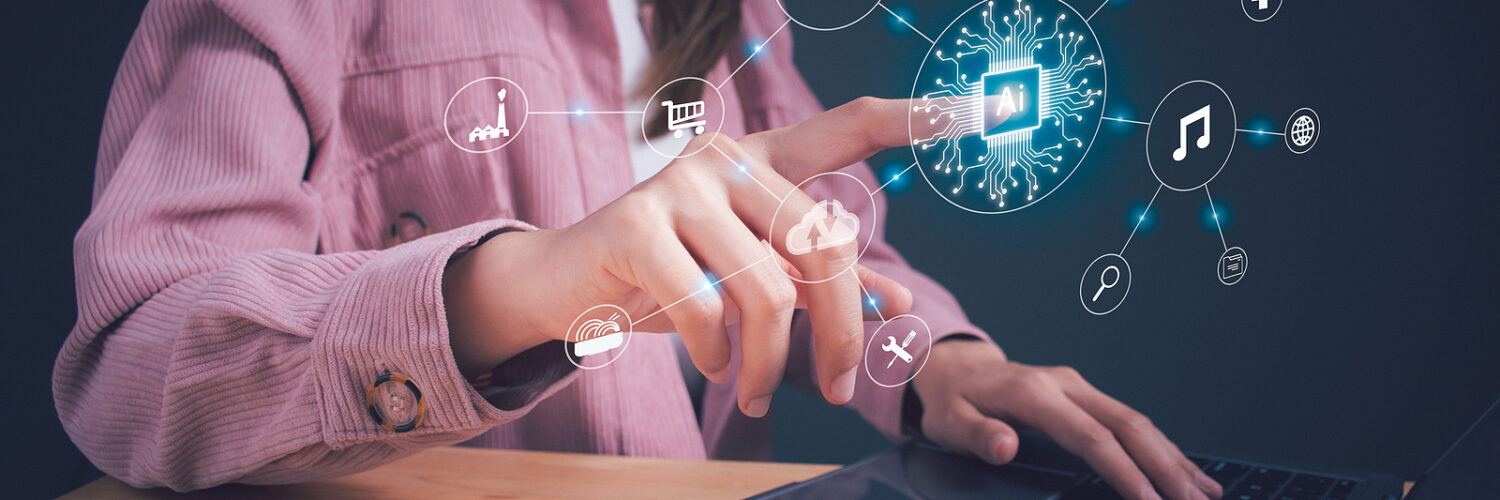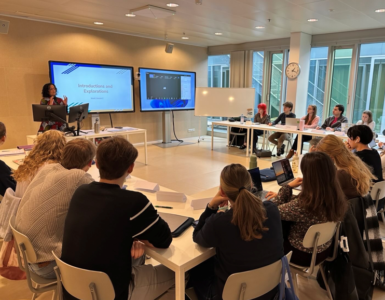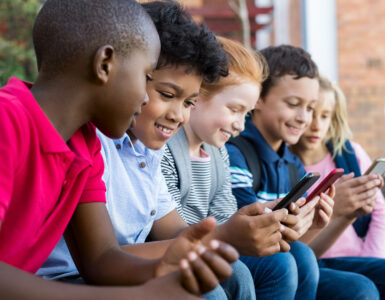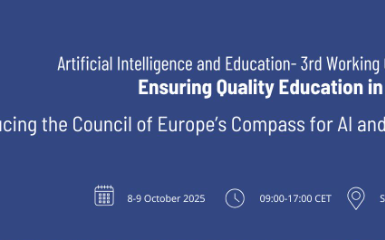by Chrissi Nerantzi, University of Leeds, UK.
The phrase that my youngest used to say when he was little comes to mind when I was introducing him to a variety of food… “I don’t like it! What is it?” Only to hear later “Mummy, mummy, tomatoes are my favourite”. He was terrified when he saw tomatoes for the first time and refused with profound stubbornness to eat them.
Professor Norman Jackson’s words on problems as opportunities have been useful framing for me. For me, his words are also a valuable reminder when thinking about AI in higher education. Artificial Intelligence (AI) is literally everywhere. Is it wise to even attempt blocking AI in (higher) education? Could we instead invest our collective efforts and creative energy to understand how we can use AI responsibly for learning, teaching and assessment? Will we not all need to be(come) AI literate to fully function in society?
Students are openly asking and educators often don’t know exactly how to respond. While some educators are experimenting openly with their students in using AI, there is suspicion, anxiety and fear among educators and if they/we should be encouraging its use or if this is a no no zone. Students have started sharing their thoughts on a events such as the student led AI panel organised by the School of Education at the University of Leeds and UCL and the related publication.
Early on the parody account by Bantshire University probably dared to say what many want to say but don’t dare?
While curiosity and imagination can’t be stopped, nor have rebels, innovators, experimenters been waiting for permission to explore AI in their classroom as the plethora activities illustrate that are shared, many educators and students would welcome an institutional position on the use of AI and institutions are working on this. The Russel Group Principles on the generative AI tools in Education are a dynamic response. Not to block, not to ignore, not to fear. Yes, to be critical and creative, to rethink the what, why, how, what for and with whom, yes to learn to use AI to enrich and diversify learning, teaching and assessment. Assessment has been one of the sticking points in this debate so far. But isn’t there a need to rethink assessment anyway? Professor Mary Richardson in her book Rebuilding Public Confidence in Educational Assessment invites educators to do exactly that and harness the power of creativity for meaningful assessment. Could Dr Jan McArthur’s proposition on authentic assessment with social value aid educators explore and consider new assessment possibilities together with such examples from open education?
We can’t deny that the pandemic has helped educators become more accustomed with the term “creativity” and creative practices across disciplines and professional areas, as the need and appetite for experimentation in teaching increased. Educators seem to have recognised more widely the value and importance of creativity for diverse, flexible, inclusive and sustainable higher education learning, teaching and assessment and have (finally) come to realise that everybody has the capacity to be creative, that everybody is indeed creative.
For me personally creativity is linked to the everyday. Making a change that makes something better, that solves a problem, introduces a smoother way and more efficient way of working in a specific setting. Often we still see creativity as something that is extraordinary and so so novel that it is only possible for some. Others still think that it has to do exclusively with work that is artistic. We are all creative. What is creative or even innovative in one context and for one individual or a group of people, may be normalised practice a long time ago. So, yes, to what I heard Grayson Perry say on the 4th of May 2020 “Creativity is a way of dealing with everyday life” on telly. More recently invited by Professor Norman Jackson, I explored lifelong-lifewide learning within professional development and the concept of novice and expert came up. I brought into the inquiry one of my students Alex Winder on the MA in Digital Education in the School of Education at the University of Leeds and our inquiry led to an article in the Creative Academic Magazine. In there we propose a creativ-o-meter if you like that is very much about the human capacity we all have to be creative in our everyday lives and that we probably do it without even realising or calling it “creative” (see Figure 1).

Figure 1. Creativ-o-meter created using O’meter by Visual thinkery CC-BY-SA (first published in Nerantzi & Winder, 2023, 15)
AI presents opportunities to illuminate further the uniqueness of human creativity and openness to diverse ideas play a key role in this. A few months ago, Dr Sarah Elaine Eaton in her post illuminated this beautifully together with the importance of transparency, openness and respect as essential ingredients. Her work on the 6 Tenets of post-plagiarism: Writing in the age of artificial intelligence provide a useful framework to explore human creativity and its role in AI. Her ideas made me also think about uncreative writing and open education. Uncreative writing, a literary genre developed by Kenneth Goldsmith came into my vocabulary and life not so long ago when I was a student on an MA in Creative Writing. His thoughts sounded radical and provoked new thinking and new connections for me within and beyond creative writing. Kenneth talks about using the web as a source and re-using and re-combining text to create something completely new. Does this sound familiar? But also it is useful to remember that the vast majority of creative ideas build on existing ideas. The link between uncreative writing and open educational resources surfaced in my inquiry. The key difference is that acknowledging explicitly the source(s) and being open and transparent about where the idea came from is at the heart of open educators resources and open education more generally. The marriage of uncreative writing, open education and creativity led to what I call uncreative teaching.
What makes us uncomfortable about AI? The ethical, legal and privacy implications? The harvesting of data sets the machine is using to generate responses without permission and consent? I heard Donald Clark challenging this recently at the first Online Learning Summit organised by Dr Margaret Korosec and colleagues the University of Leeds this year.
If universities are social greenhouses of and for experimentation and diverse emerging ideas, what role can institutions and educators in collaboration and in partnership with students, industry and society play to build an evidence-base for the responsible use of AI in higher education and society that contributes towards breaking down inequalities, eradicating misinformation and solving some of the biggest challenges of our times?

Author
Chrissi Nerantzi (NTF, CATE, PFHEA) is a Professor in Creative and Open Education in the School of Education, a Senior Lead of the Knowledge Equity Network and the Academic Lead for Discover and Explore at the University of Leeds in the United Kingdom.













